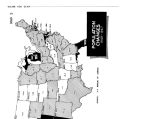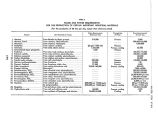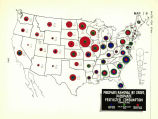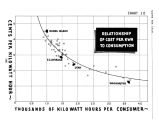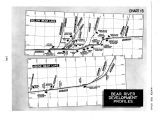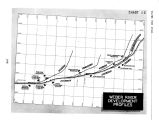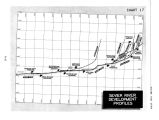| OCR Text |
Show WATER FOR UTAH orable factors - soil, climate, labor, necessary community institutions and competent management - would provide for a strong upsurge in the agricultural economy of the State. ... Not All by Hand ... In Utah, as in many other parts of the United States, the trend to mechanization of agriculture is quite evident. It is particularly significant in Utah because of the small size of its farms. While other factors such as higher- producing livestock and higher- yielding crops have had some effect, the augmentation by about 70% in the output per farm worker which took place during 1919 to 1944 was primarily due to an increase in the quantity and quality of agricultural machinery on the farms of Utah. The trend is definitely toward the use of more machinery and motor power on all types of farms. This makes possible a certain amount of intensification; and if water were available in the amounts required, the efficiency of Utah's farms could be increased many fold, both by increasing work on additional acres and in the more intensive cropping of existing acres. ... Factories - Outgrowth of the Land ... Utah's significant food- processing industry, ( See Map 10 - Agricultural Processing Plants in Utah, 1947 - page 25), ranks high among the states of the Nation in the production of canned fruits and vegetables. Other food processing activities are now assuming major economic proportions in the State. In 1946, Utah's canning of vegetables and fruits approximated 70% of the total production of the Upper Colorado Basin States. Utah produced in excess of 1,500,000 pounds of canned food, and the expansion of this activity will be determined directly by the availability of water supplies and the consequent expansion of those phases of Utah's agriculture which can best supply the demand. The frozen food industry is making substantial progress in the State. Premium quality crops, picked at the moment of ripeness, supply freezing plants close to the centers of crop production. The 1947 frozen fruit and vegetable pack is believed to have peaked that for 1946, which included 58,000 pounds of berries, 3,900,000 pounds of small fruit and 7,300,000 pounds of vegetables. This is equivalent to almost 80% of the frozen fruit and vegetable pack of the Upper Colorado Basin. Because of rising national consumer demands for frozen products, this market - given the ability of Utah to produce - would be a desirable and profitable outlet for the farm produce of Utah. Meat packing, poultry and dairy products industries are expanding. Although Utah's meat packing establishments are only about one- third of the capacity of those in the State of Colorado, they include fourteen important firms, the products of half of which go beyond the State. The West Coast market is stressing the need for grain- fed animals and carcasses, resulting in an increasing number of feed lots using sugar beet by- products and hay. On the other hand, the demand for poultry, especially turkeys, is principally from Eastern States. Dairy products, of which Utah produces an amount equivalent to one- third of the total production of the four Upper Colorado Basin States, are sold in large amounts beyond the Mountain States' region. Butter shipments to such out- of- state areas average almost three million pounds per year. Condensed and evaporated milk shipments are of the same order. Cheese is important in shipments to the East and also to West Coast States. Here again, the limiting factor is one of water supply, for the acres which could be expanded and utilized more effectively and for actual use for processing in new food industry establishments. ( See Table I - Water and Power Requirements for Certain Important Agricultural Industries - page 26.) 124] |















